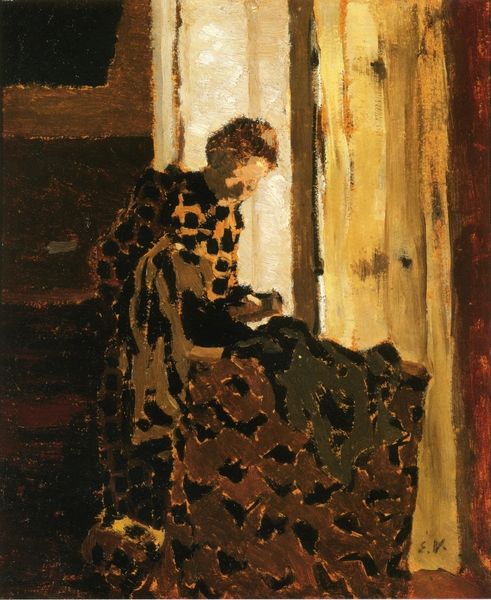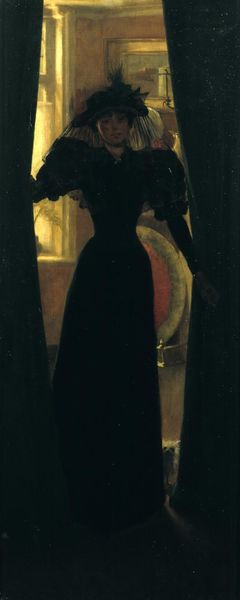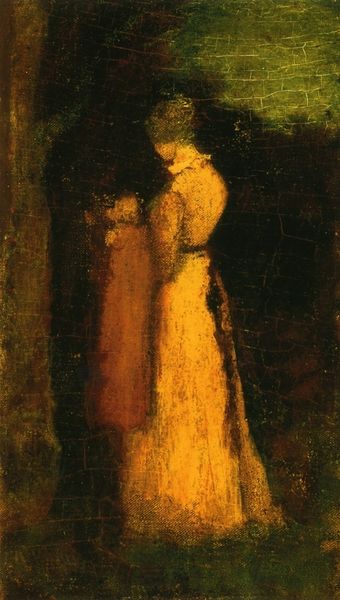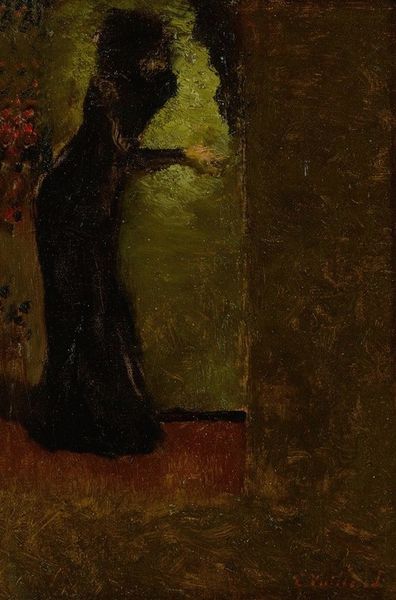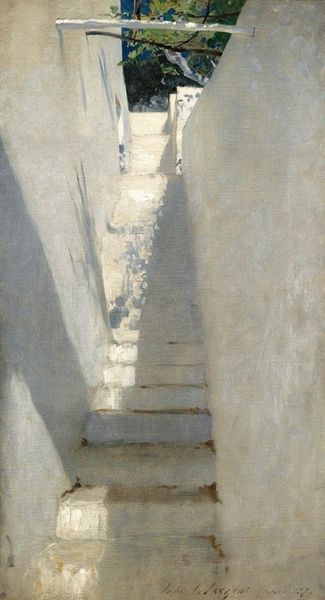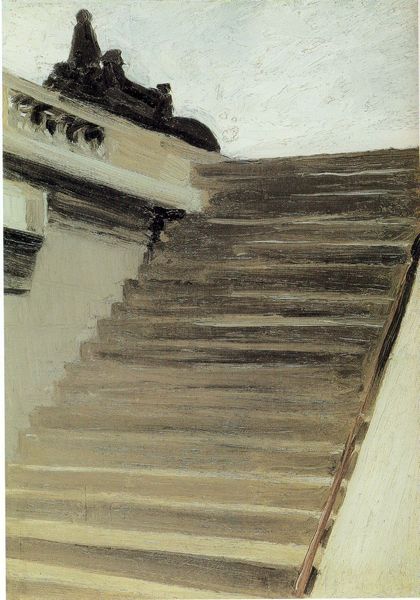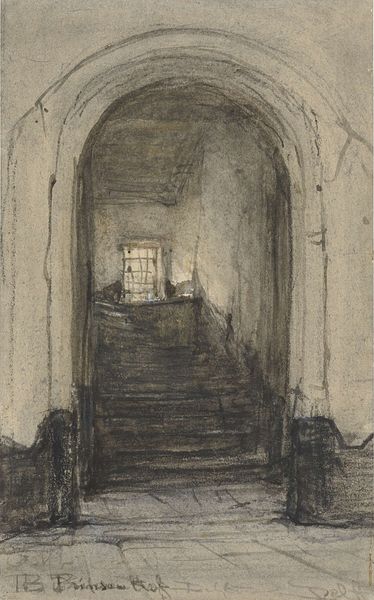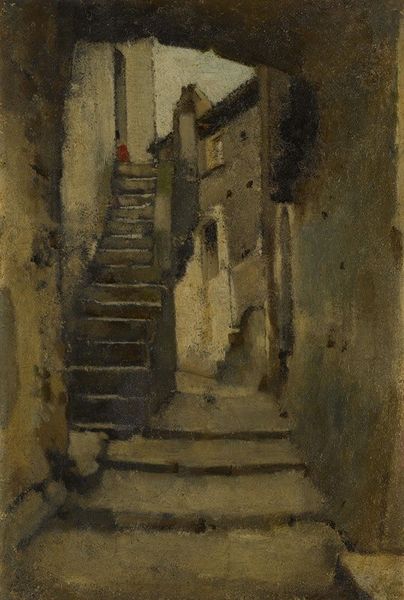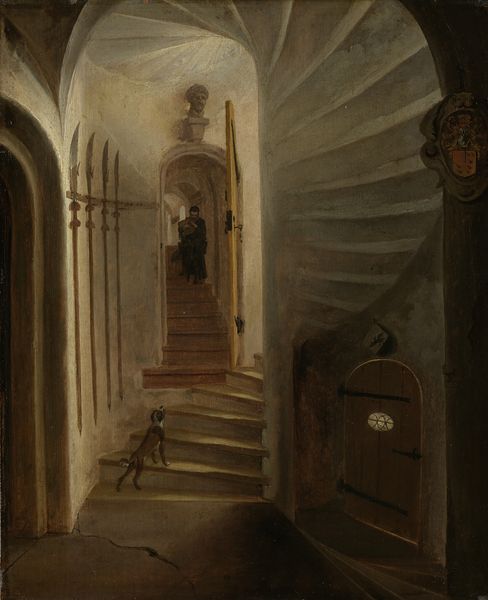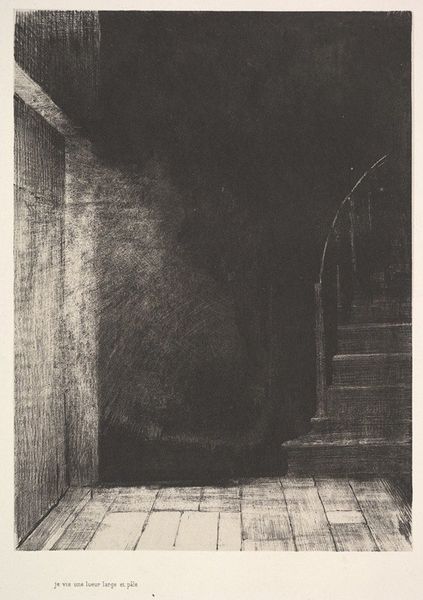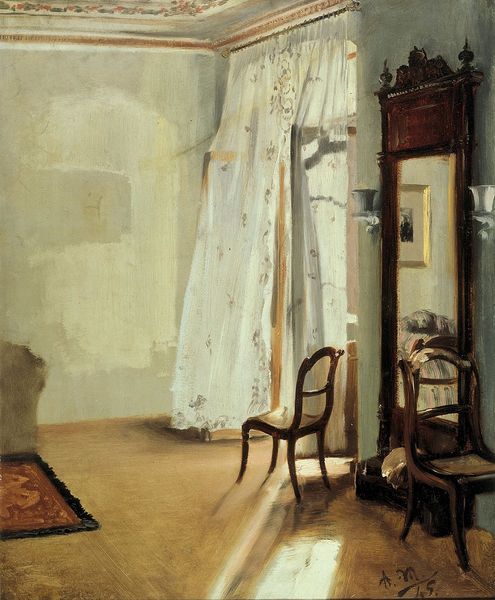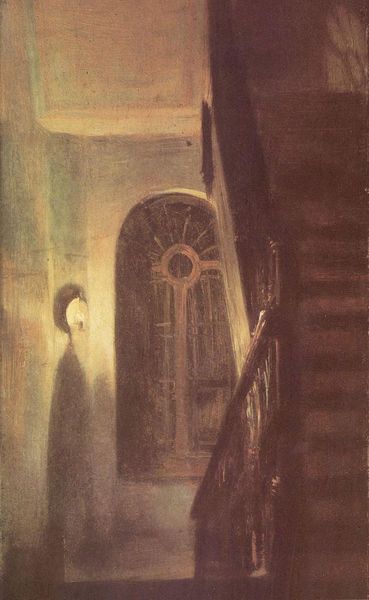
painting, oil-paint
#
portrait
#
painting
#
oil-paint
#
landscape
#
figuration
#
romanticism
#
chiaroscuro
Copyright: Public domain
Editor: Here we have Caspar David Friedrich’s oil painting, "Woman on the Stairs," created around 1825. The woman’s figure is quite small amidst this imposing architecture and very dark staircase. What stories do you see emerging from this piece? Curator: I see a visual poem about the plight of women in 19th-century domestic spaces. Consider the stark contrast in light. She is bathed in a soft, almost ethereal glow at the top of the stairs, while the lower steps descend into deep shadow. Doesn't this visual metaphor speak to the limited opportunities available to women, confined to the domestic sphere, striving to ascend towards a more enlightened future? Editor: That's interesting. I hadn't considered the shadow as symbolic, but as representing the lower class. What about her turned back? Doesn’t that symbolize her resistance or maybe lack of power? Curator: Precisely. The averted gaze, common in Friedrich’s work, invites us to consider her internal world, but it also highlights the limited agency afforded to women. Her labor is the engine that runs the household. I read it as an active position, perhaps the single chance to express agency that she can find. Do you consider how she might claim power within those bounds? Editor: Perhaps in maintaining order or having personal goals despite these limitations. This discussion made me view Friedrich's artwork not just as Romantic landscapes but insightful commentaries on gender and society. Curator: Absolutely! It's in exploring these intersections that art truly speaks to our present. And to remember the value of female labour within households, whether in 1825 or today.
Comments
No comments
Be the first to comment and join the conversation on the ultimate creative platform.
